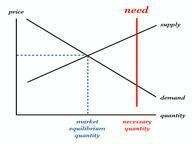Quiz Answer Key and Fun Facts
1. If the Price Elasticity of Demand for the Good X is -0.7, then what type of demand does this good have?
2. If the Price Elasticity of Demand for the good is elastic, then when the price for this good increases what will happen to the producer's total profit?
3. There are two goods: Good A and Good B. They are close substitutes but not perfect substitutes. What will the Cross Elasticity of Demand look like if the price of the Good A will increase and the price of the Good B will remain unchanged?
4. In the case of a Giffen good (e.g. potatoes), if the real consumer's income rises what kind of Income Elasticity of Demand will this good have?
5. Which of these factors does NOT affect the Price Elasticity of Demand?
6. If the government wants to raise the tax revenue by the means of indirect taxation, then what type of goods should the tax be levied on?
7. What kind of Income Elasticity of Demand would plastic shoes have?
8. If increased production means a rise in the unit costs, then what type of Price Elasticity of Supply will the good produced have when its price in the market increases?
9. If the price of the good rises by 40% and the quantity supplied of this good increases by 20%, then what is the Price Elasticity of Supply of this good?
10. The price of the Good B increases by 20% causing the 10% fall in the demand for the Good A. What is the Cross Elasticity of Demand?
Source: Author
juliaakamumu
This quiz was reviewed by FunTrivia editor
TabbyTom before going online.
Any errors found in FunTrivia content are routinely corrected through our feedback system.
